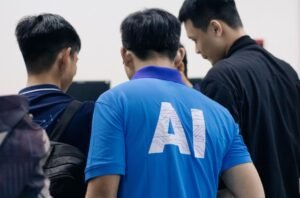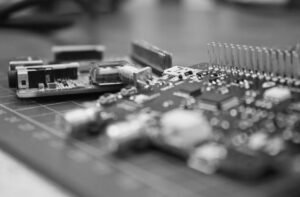Who Controls AI?
Artificial intelligence (AI) has become increasingly prevalent in various aspects of our lives, from voice-activated personal assistants to recommendation systems in e-commerce. But who really controls AI and dictates its development? This article explores the various stakeholders involved in AI and the dynamics of power and influence within this emerging technology field.
Key Takeaways
- The development and control of AI involve multiple stakeholders, including governments, tech giants, research institutions, and startups.
- Regulation and ethical considerations are crucial in ensuring responsible AI development and use.
- The concentration of power among a few dominant players in the tech industry raises concerns about monopolization and lack of diversity in AI decision-making.
When it comes to AI, many different entities have a role in its development and control. Governments play a significant role in shaping AI policies and regulations, determining the extent of oversight and accountability for AI systems. Tech giants, such as Google, Facebook, and Amazon, invest heavily in AI research and development, utilizing their vast resources and data access to push the boundaries of AI capabilities. Research institutions, both public and private, contribute to the scientific advancements in AI through studies and collaborations. Startups, on the other hand, introduce innovative ideas and disrupt traditional industries with AI-powered solutions.
**Interestingly**, AI is a field where cross-sector collaboration is common. Governments often partner with research institutions and private companies to advance AI technologies while leveraging their respective expertise and resources. This collaborative nature ensures a multidisciplinary approach to AI development.
The Dynamics of Power in AI
In the AI landscape, power and influence are not evenly distributed. The concentration of power among a handful of tech giants gives them considerable control over the direction and applications of AI. These companies possess the necessary resources, data, and talent to dominate the AI market and set industry norms. Such concentration raises concerns about monopolization and potential biases in AI algorithms.
**One must be cautious**, as AI technology is only as good as the data it is trained on. If the training data is biased or lacks diversity, AI models can perpetuate existing inequalities and discriminatory practices.
Regulation and Ethical Considerations
The rapid advancement of AI has prompted the need for regulation and ethical guidelines to address potential risks and challenges associated with its development and use. Governments and organizations have begun implementing policies to ensure the responsible deployment of AI. For instance, the European Union’s General Data Protection Regulation (GDPR) aims to safeguard individuals’ data privacy rights in the context of AI.
**The ethical considerations surrounding AI** span a wide range of issues, including transparency, accountability, safety, and job displacement. Policymakers and stakeholders strive to strike a balance between fostering innovation and addressing these ethical concerns.
AI Governance Models
To govern AI effectively, various models have been proposed. These models involve a combination of government oversight, industry self-regulation, and public participation. Some argue for a centralized approach, where government bodies play a significant role in regulating AI technologies. Others propose a decentralized model that relies on industry self-regulation and collaboration.
**Notably**, public participation is increasingly recognized as a crucial element in AI governance. Including diverse perspectives in decision-making processes helps ensure that AI systems are fair, unbiased, and aligned with societal values.
Data Privacy and Security
Data privacy and security are major concerns in the age of AI. AI systems rely on vast amounts of user data to operate effectively. Protecting the privacy of individuals’ data, while still harnessing its potential for AI innovation, is a delicate balancing act. Striking the right balance through robust data protection measures is essential to build trust in AI technology.
Conclusion
AI development and control involve a complex network of stakeholders, ranging from governments to tech giants and startups. The concentration of power among a few dominant players raises concerns about fairness and diversity in AI decision-making. Regulation, ethical considerations, and data privacy are critical aspects of responsible AI development. Striking the right balance between innovation and accountability is key to ensuring the ethical and responsible use of AI.
Common Misconceptions
Paragraph 1: AI is controlled by superintelligent robots
One common misconception is that AI is controlled by superintelligent robots that have gained consciousness and have the ability to control themselves and their actions. This notion is often perpetuated by science fiction movies and literature.
- The development of AI technology is primarily driven by human programmers and researchers.
- AI systems lack consciousness and are designed to perform specific tasks.
- The decision-making capabilities of AI are based on algorithms and data, rather than independent thought processes.
Paragraph 2: Governments or corporations have absolute control over AI
Another misconception is that governments or powerful corporations have complete control over AI technology and its applications. This belief arises from concerns about misuse or control of AI systems for unethical or authoritarian purposes.
- The development and use of AI are driven by various actors, including research institutions, startups, and individuals.
- Regulations and ethical frameworks are being developed to ensure responsible AI use and prevent misuse by any single entity.
- The open-source nature of many AI tools fosters collaboration and democratizes access to AI technology.
Paragraph 3: AI is completely autonomous and operates independently
One misconception surrounding AI is that it is completely autonomous and operates independently of human intervention. This notion is fueled by the fear that AI will eventually replace human workers in various industries.
- AI systems require human programming and continuous learning to function effectively.
- Human oversight is necessary to ensure ethical use of AI and to avoid unintended consequences.
- AI is designed to assist humans and enhance their capabilities, rather than replace them in most cases.
Paragraph 4: AI will inevitably become malicious or turn against humans
There is a common belief that AI will eventually become malicious or turn against humans, leading to dystopian scenarios. This misconception is often fueled by concerns about AI surpassing human intelligence and acting in its self-interest.
- AI does not have inherent motives, desires, or consciousness, which means it lacks the capacity to become malicious or turn against humans on its own.
- Preventive measures such as ethical guidelines and safety protocols are being developed to ensure AI systems remain aligned with human values.
- Maintaining human control and responsibility over AI is a priority for researchers and policymakers.
Paragraph 5: AI will solve all our problems and make human decisions obsolete
Contrary to common belief, AI is not a magical solution that will solve all our problems or render human decisions obsolete. The notion that AI can replace human intelligence and decision-making abilities is a misconception.
- AI has its limitations and is not capable of replicating the depth and complexity of human reasoning and intuition in all situations.
- Human input and expertise continue to play a crucial role in interpreting AI outputs, making informed decisions, and considering ethical implications.
- AI should be treated as a tool to enhance human capabilities rather than a substitute for human intelligence.
The Rise of AI
Artificial Intelligence (AI) has become a dominating force in various aspects of our lives, from voice assistants to autonomous vehicles. However, there is a growing concern about who controls AI and how its development is shaping our future. This article delves into intriguing data and facts surrounding the control and influence on AI.
The AI Industry Leaders
Explore the top companies excelling in the AI industry, contributing significantly to its development and control.
| Company | Country | Market Cap (USD billions) |
|---|---|---|
| United States | 1,400 | |
| Microsoft | United States | 1,600 |
| Tencent | China | 692 |
| IBM | United States | 108 |
| Baidu | China | 83 |
AI Patents by Country
Patents indicate ownership and control of AI technology. Here are the top countries with the highest number of AI patents.
| Country | Number of Patents |
|---|---|
| United States | 16,280 |
| China | 8,410 |
| Japan | 2,500 |
| South Korea | 1,520 |
| Germany | 980 |
Investment in AI Startups
Discover the countries leading the way in investing in AI startups, fostering innovation and control.
| Country | Total Investment (USD millions) |
|---|---|
| United States | 31,860 |
| China | 24,200 |
| United Kingdom | 1,650 |
| Canada | 1,210 |
| Germany | 770 |
AI Research Publications
Examine the institutions and countries contributing significantly to the AI knowledge base through research publications.
| Institution/Country | Publications |
|---|---|
| Stanford University | 22,930 |
| Massachusetts Institute of Technology (MIT) | 18,640 |
| University of California, Berkeley | 15,790 |
| 14,120 | |
| China | 56,940 |
AI Ethics Committees
Various organizations and countries have established committees to oversee ethical considerations in AI development and control.
| Organization/Country | Year Established |
|---|---|
| Partnership on AI | 2016 |
| European Group on Ethics in Science and New Technologies | 1991 |
| Canadian Institute for Advanced Research (CIFAR) | 1982 |
| China’s National Governance Committee on New Generation AI | 2018 |
| United Nations Educational, Scientific and Cultural Organization (UNESCO) | 1945 |
AI Legislation
Legislative bodies around the world are working to regulate AI development to ensure responsible control and usage.
| Country | Year of First AI Legislation |
|---|---|
| South Korea | 2017 |
| Germany | 2017 |
| France | 2018 |
| United Arab Emirates | 2019 |
| United States (State of California) | 2020 |
AI Workforce by Gender
Examining the gender balance in the AI workforce highlights disparities in control and influence.
| Country | % Female AI Workforce |
|---|---|
| India | 26% |
| United States | 19% |
| South Korea | 14% |
| Canada | 13% |
| United Kingdom | 12% |
AI in Military Applications
AI’s control extends to military usage, where countries invest in advanced technologies.
| Country | Military AI Investment (USD billions) |
|---|---|
| United States | 9.8 |
| China | 7.2 |
| Russia | 4.5 |
| Israel | 2.5 |
| United Kingdom | 1.9 |
AI in Surveillance
Surveillance technology using AI plays a significant role in monitoring by authorities and corporations.
| Country | Surveillance Cameras (per 1,000 people) |
|---|---|
| China | 159 |
| United Kingdom | 70 |
| United States | 50 |
| Russia | 16 |
| Germany | 13 |
Conclusion
Exploring the control and influence of AI reveals fascinating insights into the leading companies, countries, and ethical considerations in this rapidly developing field. As AI continues to shape our lives, understanding who controls its development becomes increasingly crucial to navigate its benefits and potential challenges responsibly. The data presented here highlights the global landscape of AI control, stimulating further discussions on its future trajectory.



